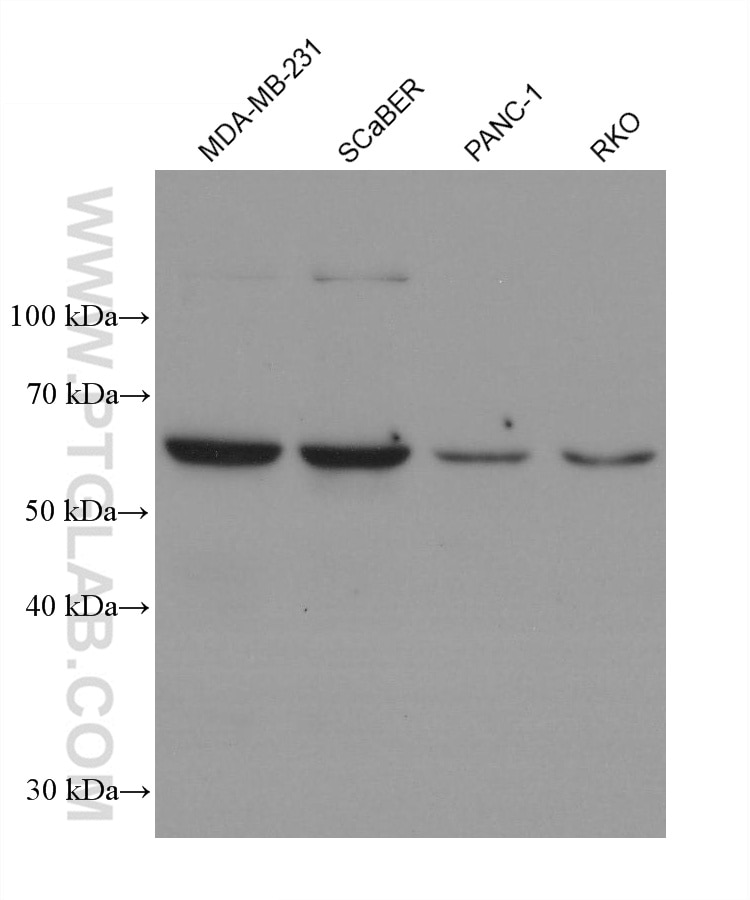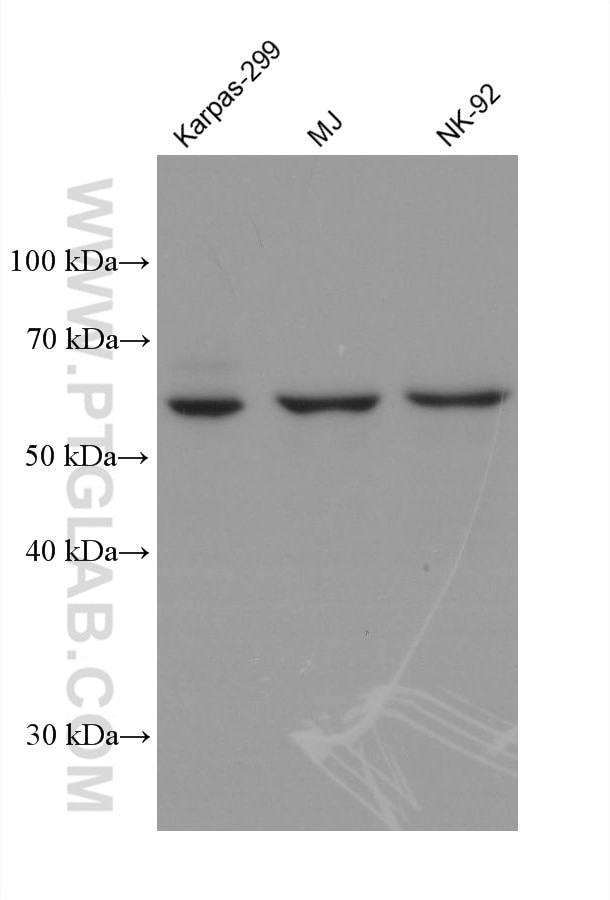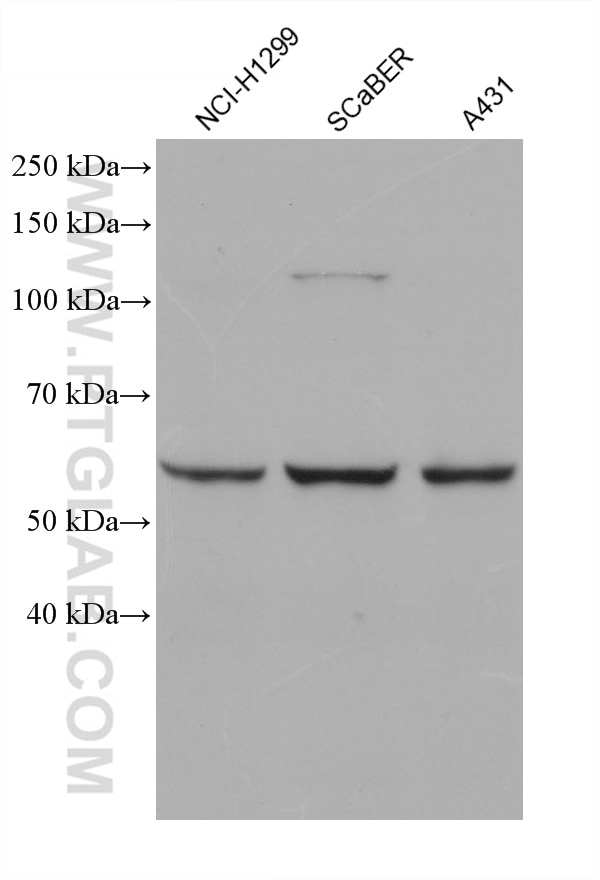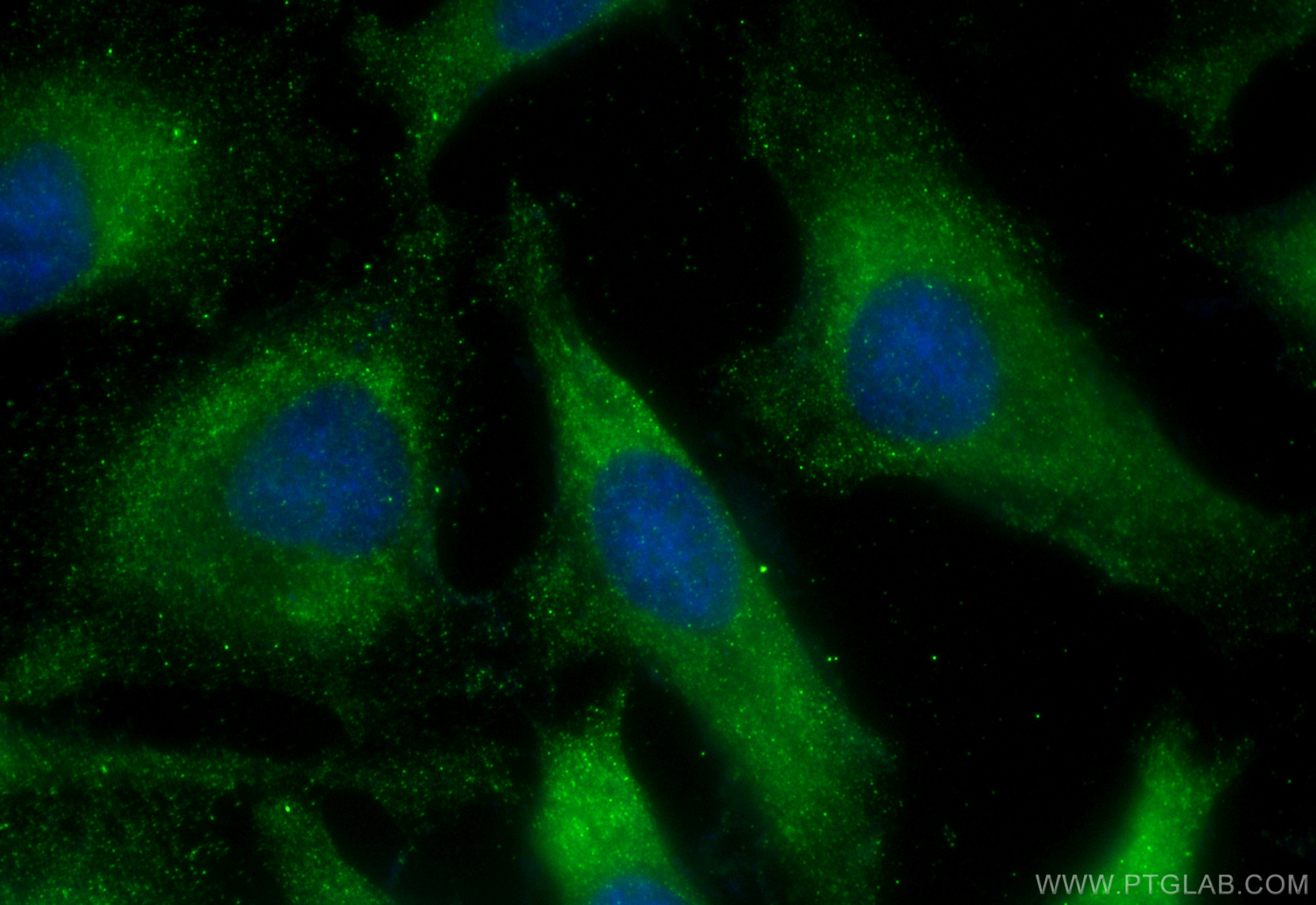Anticorps Monoclonal anti-cGAS
cGAS Monoclonal Antibody for WB, IF/ICC, ELISA
Hôte / Isotype
Mouse / IgG1
Réactivité testée
Humain et plus (1)
Applications
WB, IF/ICC, ELISA
Conjugaison
Non conjugué
CloneNo.
2G2C5
N° de cat : 68640-1-Ig
Synonymes
Galerie de données de validation
Applications testées
| Résultats positifs en WB | Karpas-299 cells, cellules A431, cellules MDA-MB-231, cellules NCI-H1299 |
| Résultats positifs en IF/ICC | cellules HeLa, |
Dilution recommandée
| Application | Dilution |
|---|---|
| Western Blot (WB) | WB : 1:2000-1:10000 |
| Immunofluorescence (IF)/ICC | IF/ICC : 1:400-1:1600 |
| It is recommended that this reagent should be titrated in each testing system to obtain optimal results. | |
| Sample-dependent, check data in validation data gallery | |
Applications publiées
| WB | See 2 publications below |
Informations sur le produit
68640-1-Ig cible cGAS dans les applications de WB, IF/ICC, ELISA et montre une réactivité avec des échantillons Humain
| Réactivité | Humain |
| Réactivité citée | souris |
| Hôte / Isotype | Mouse / IgG1 |
| Clonalité | Monoclonal |
| Type | Anticorps |
| Immunogène | cGAS Protéine recombinante Ag30074 |
| Nom complet | chromosome 6 open reading frame 150 |
| Masse moléculaire calculée | 496 aa, 54 kDa |
| Poids moléculaire observé | 60 kDa |
| Numéro d’acquisition GenBank | BC113608 |
| Symbole du gène | cGAS |
| Identification du gène (NCBI) | 115004 |
| Conjugaison | Non conjugué |
| Forme | Liquide |
| Méthode de purification | Purification par protéine G |
| Tampon de stockage | PBS with 0.02% sodium azide and 50% glycerol |
| Conditions de stockage | Stocker à -20°C. Stable pendant un an après l'expédition. L'aliquotage n'est pas nécessaire pour le stockage à -20oC Les 20ul contiennent 0,1% de BSA. |
Informations générales
cGAS (Cyclic GMP-AMP synthase), also known as C6orf150 or h-cGAS, is a 522 aa protein. cGAS mediates innate immune responses against invading pathogens, or against self-dsDNA, which causes autoimmune disorders. The cGAS sensor not only recognizes cytosolic dsDNA but also synthesizes the second messenger cGAMP from ATP and GTP, which then binds to and activates STING. STING undergoes conformational changes and translocation from the endoplasmic reticulum to the Golgi apparatus to encounter TBK1 and IRF3, eventually triggering the production of type I IFNs.
Protocole
| Product Specific Protocols | |
|---|---|
| WB protocol for cGAS antibody 68640-1-Ig | Download protocol |
| IF protocol for cGAS antibody 68640-1-Ig | Download protocol |
| Standard Protocols | |
|---|---|
| Click here to view our Standard Protocols |
Publications
| Species | Application | Title |
|---|---|---|
Environ Pollut Disturbance of Mitochondrial Dynamics Led to Spermatogenesis Disorder in Mice Exposed to Polystyrene Micro- and Nanoplastics | ||
J Inflamm Res Study on the Mechanism of Artesunate in Modulating AR Epithelial Injury and Th2-Type Inflammatory Status |





